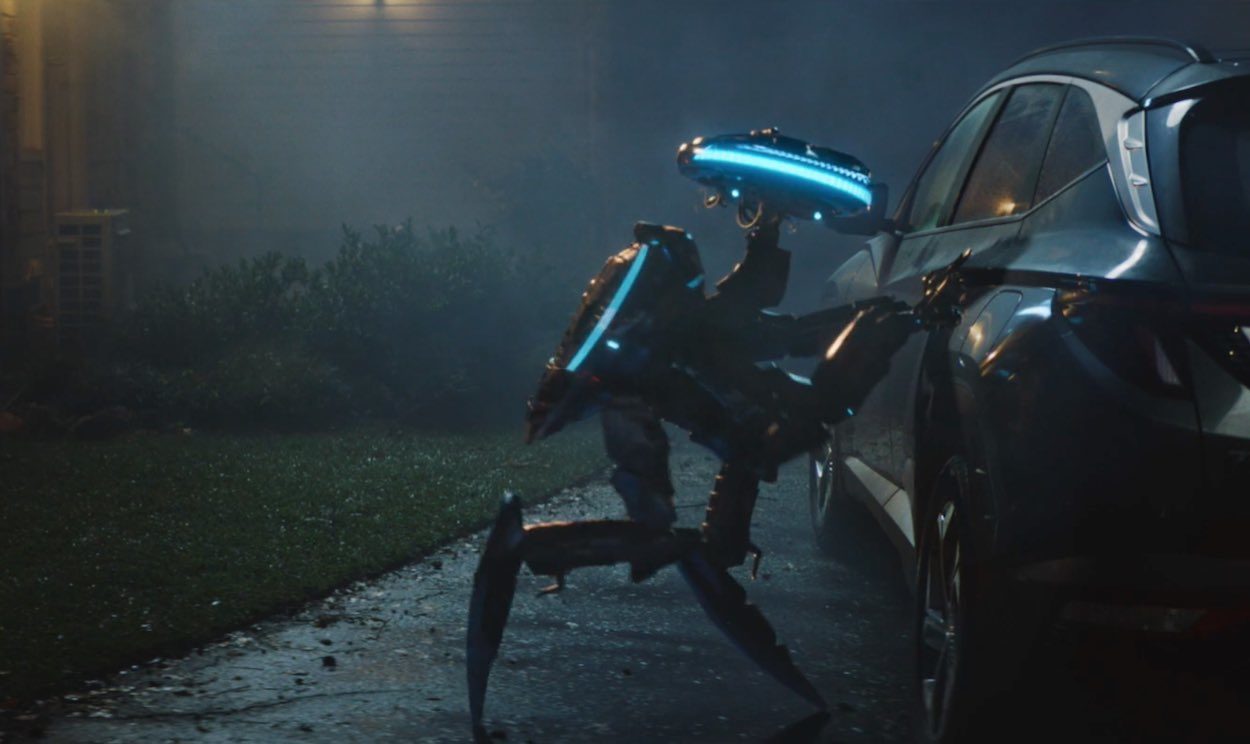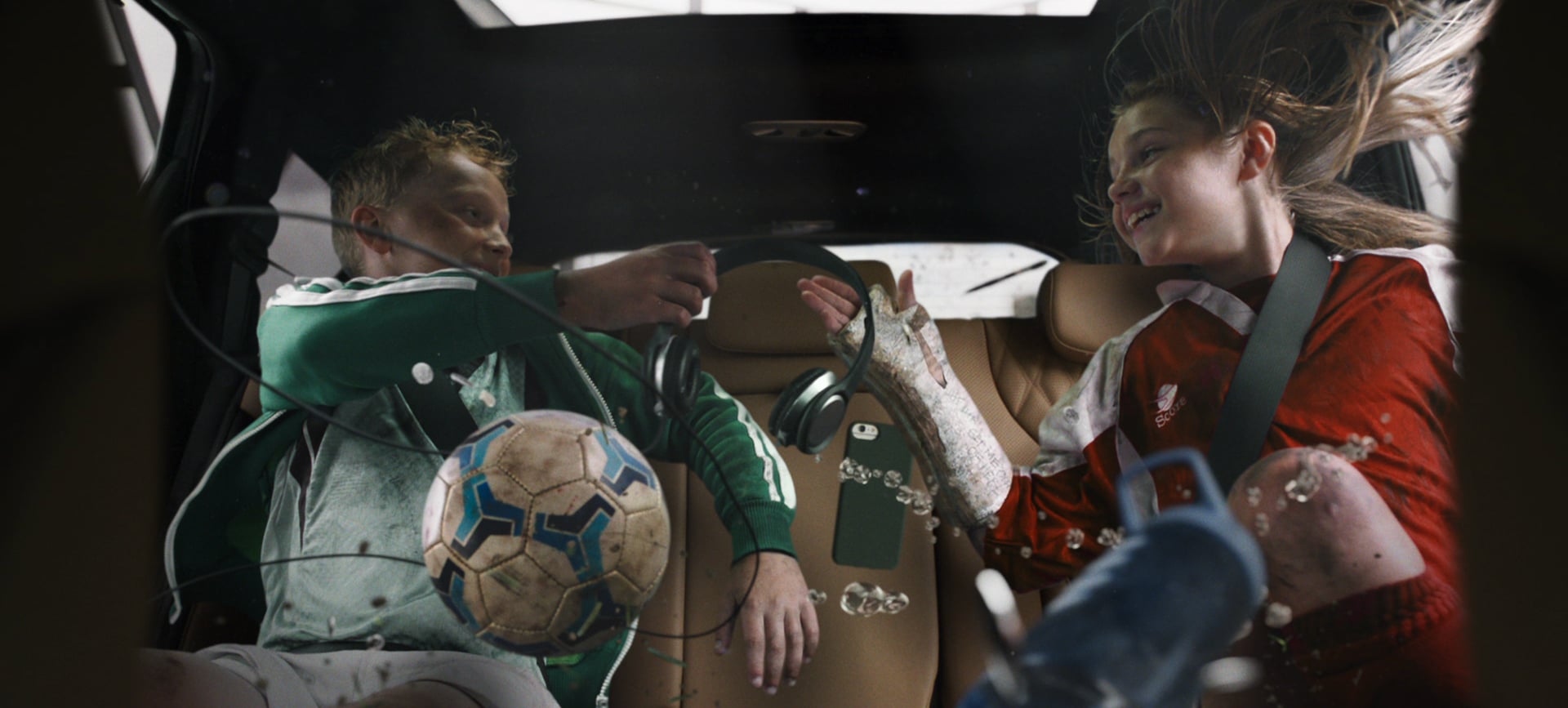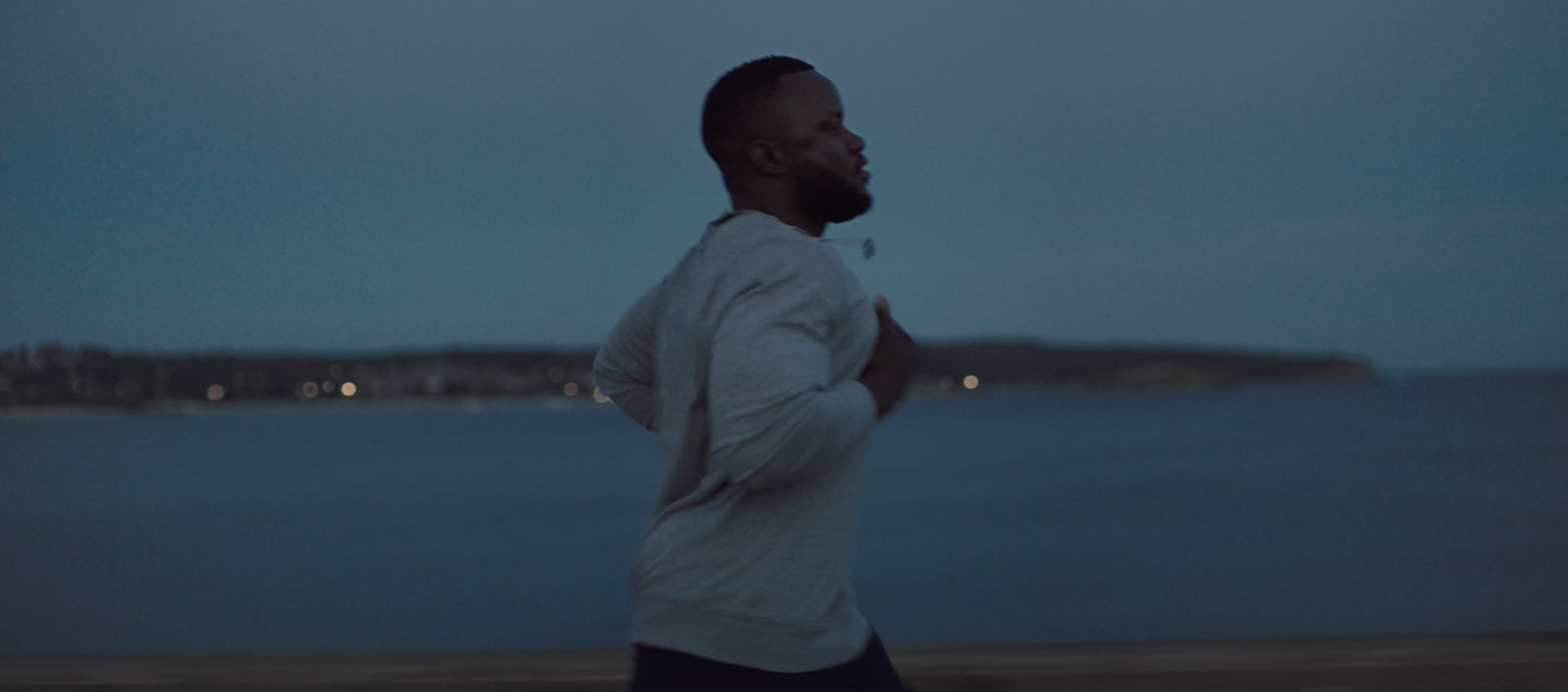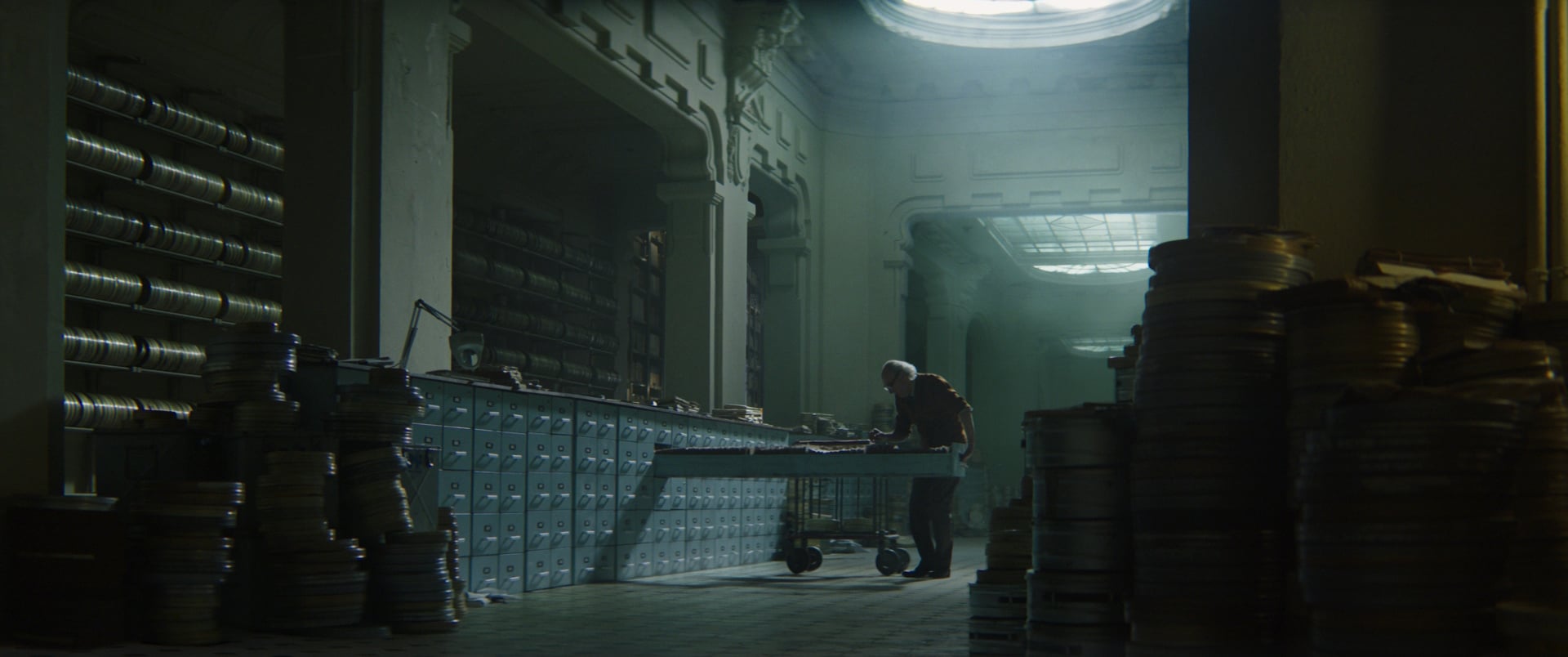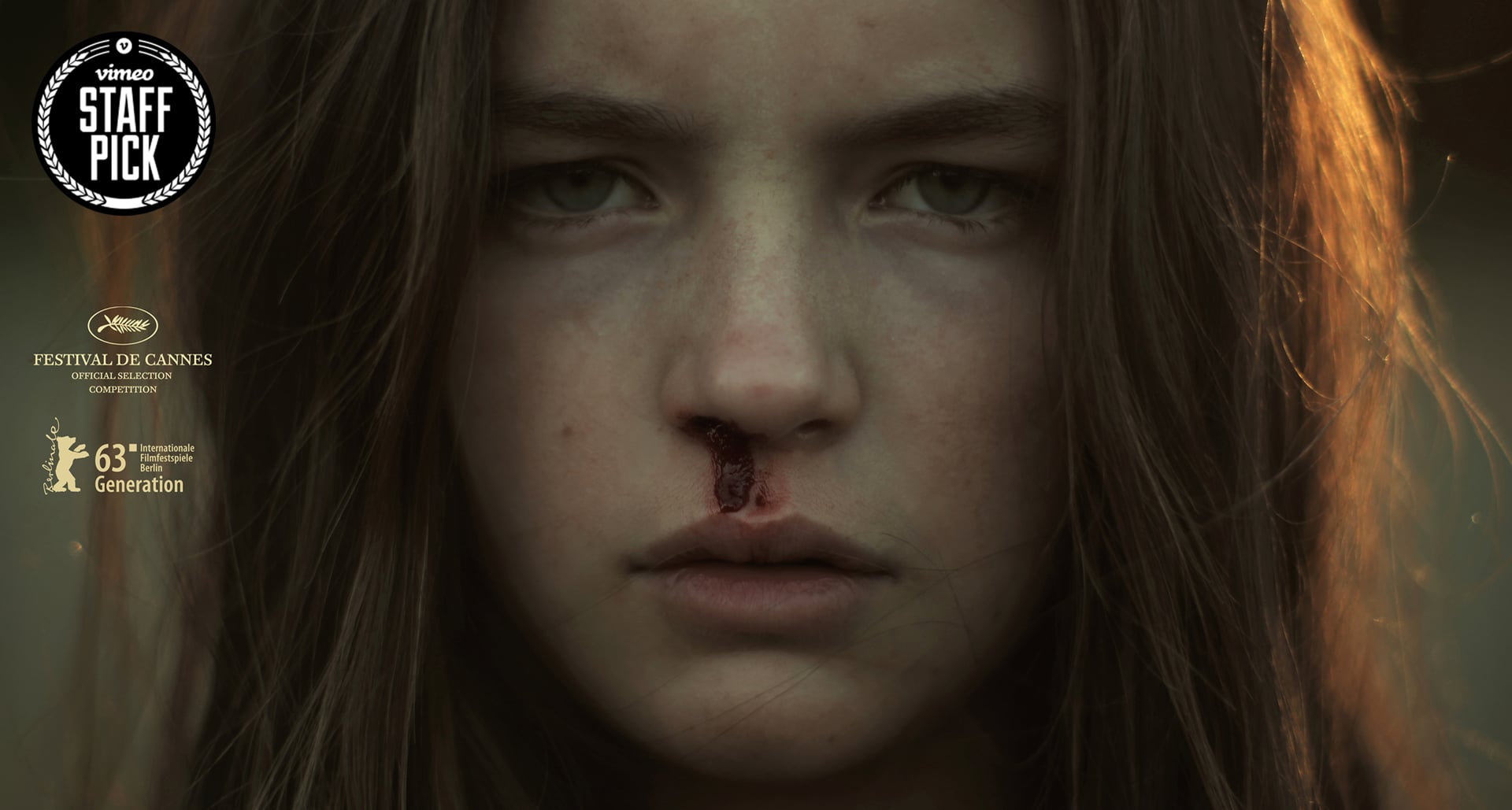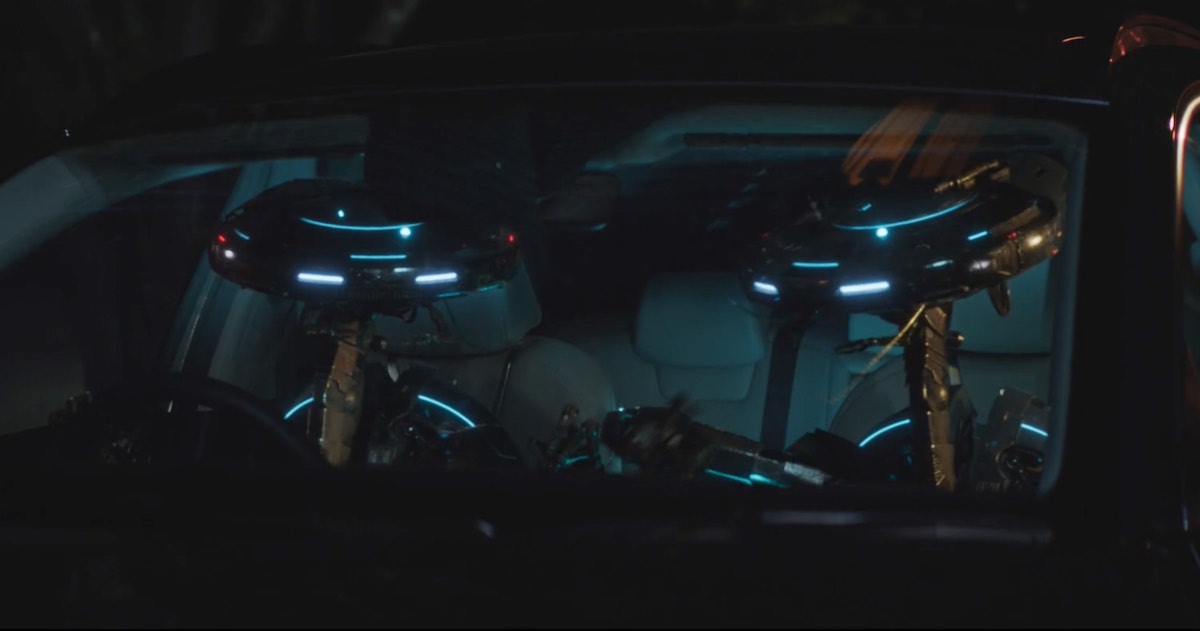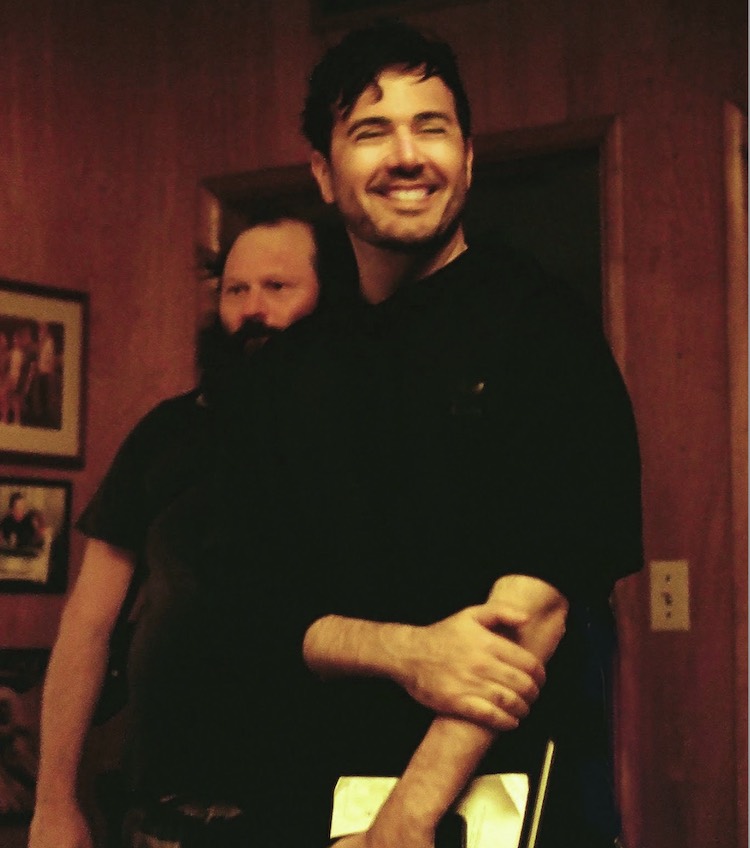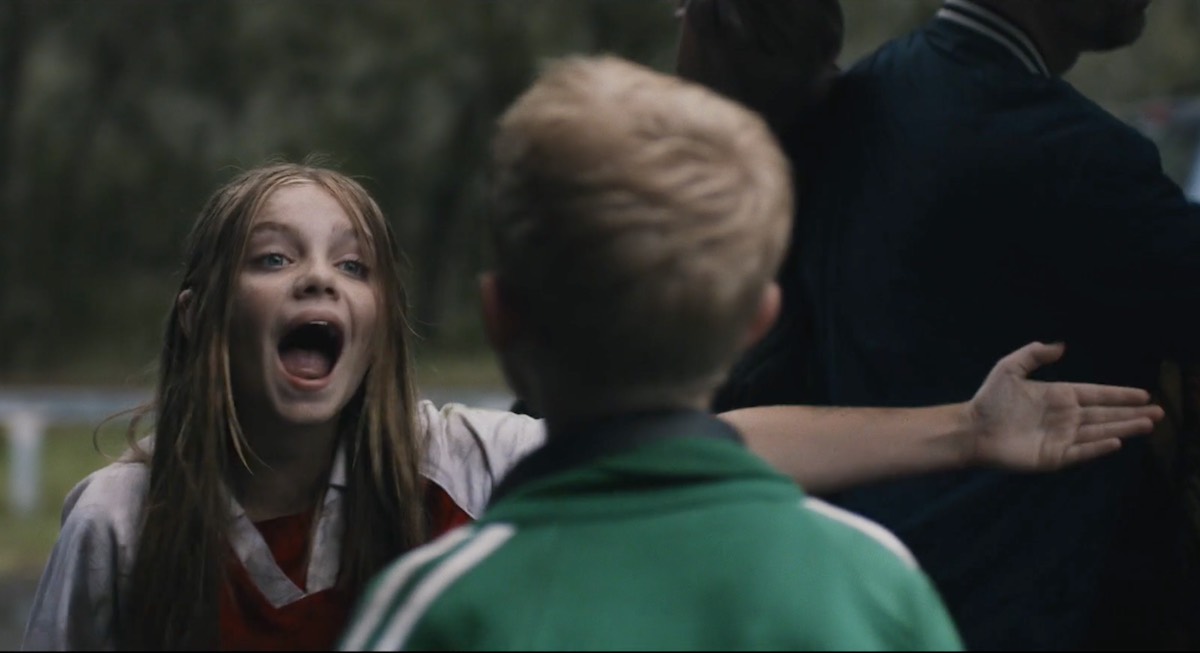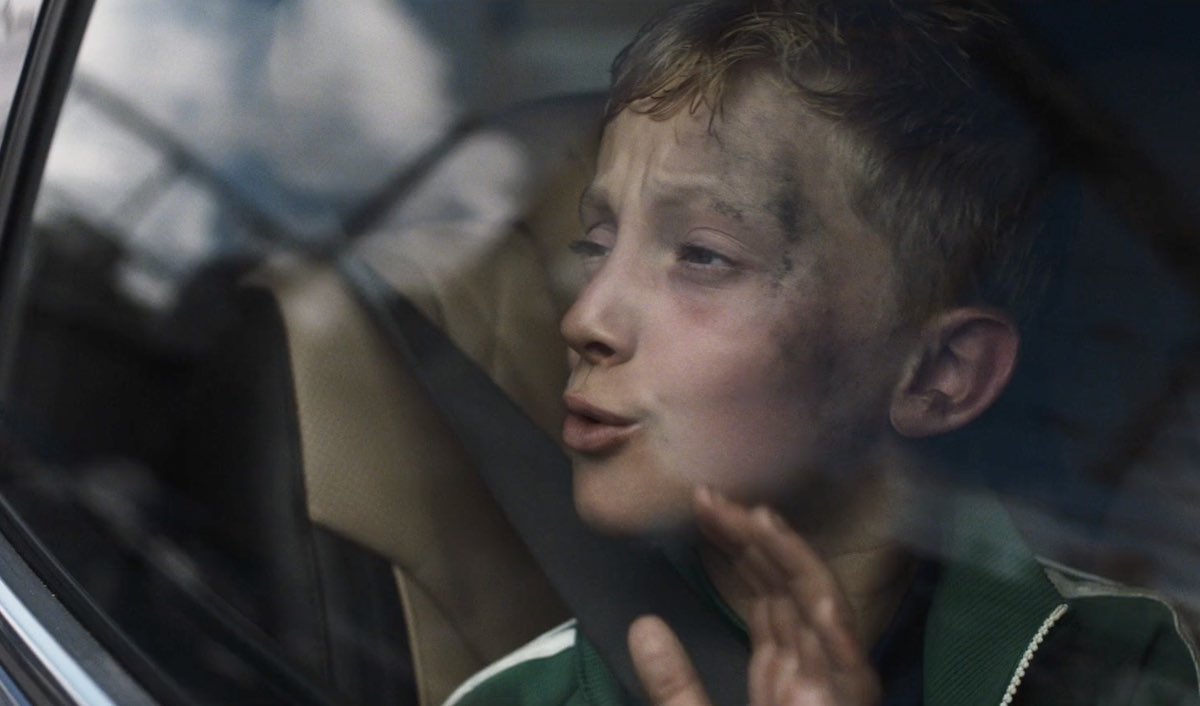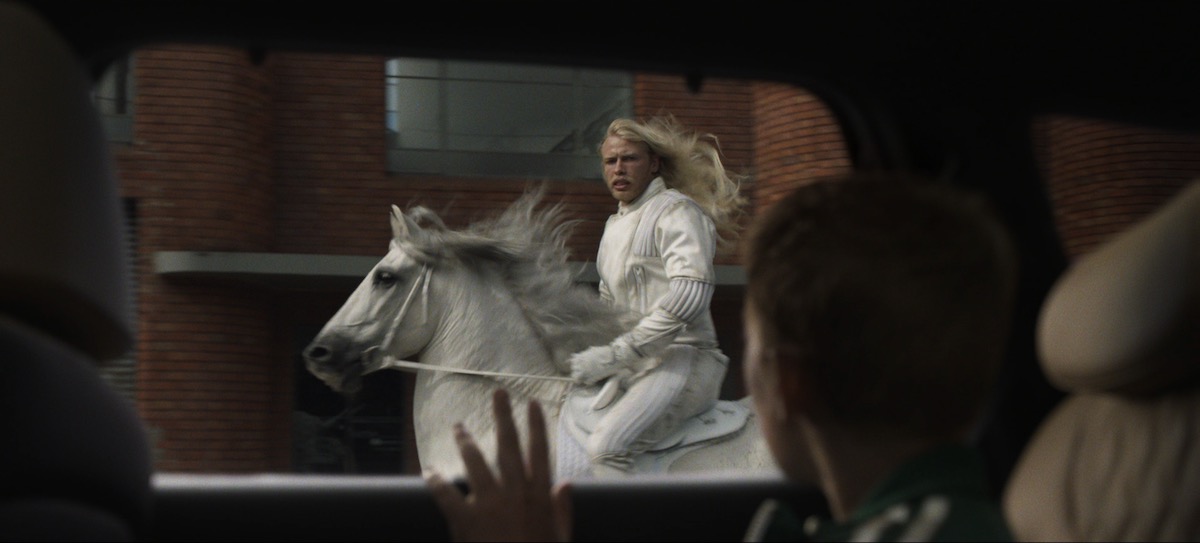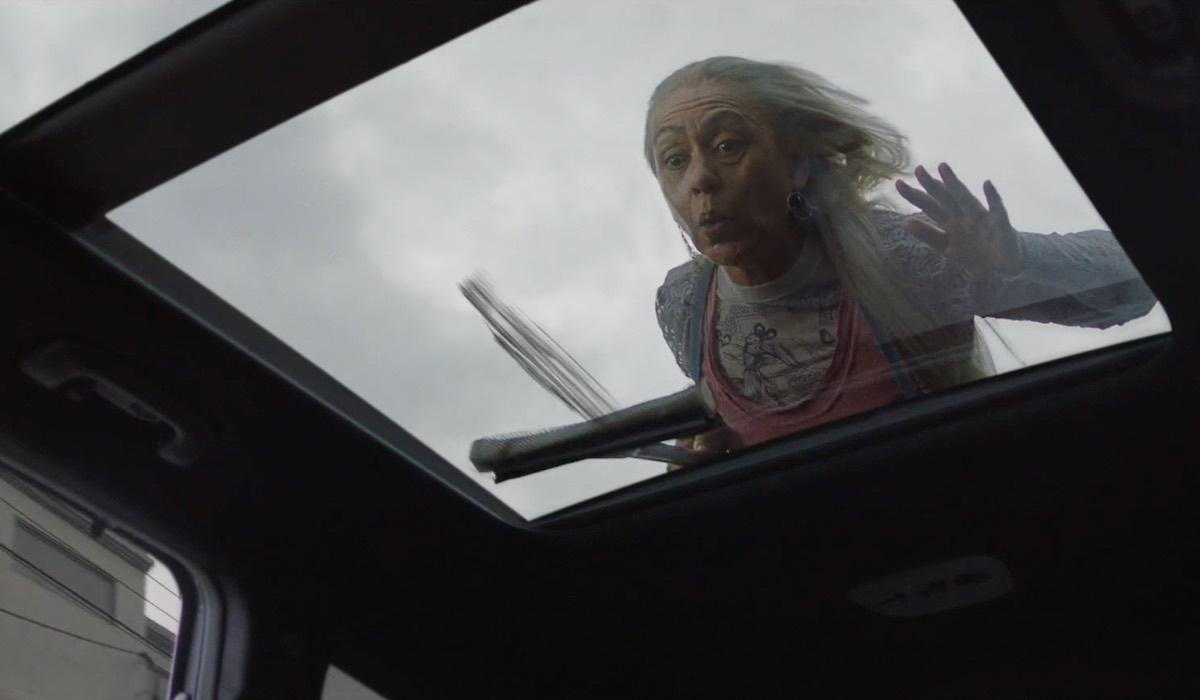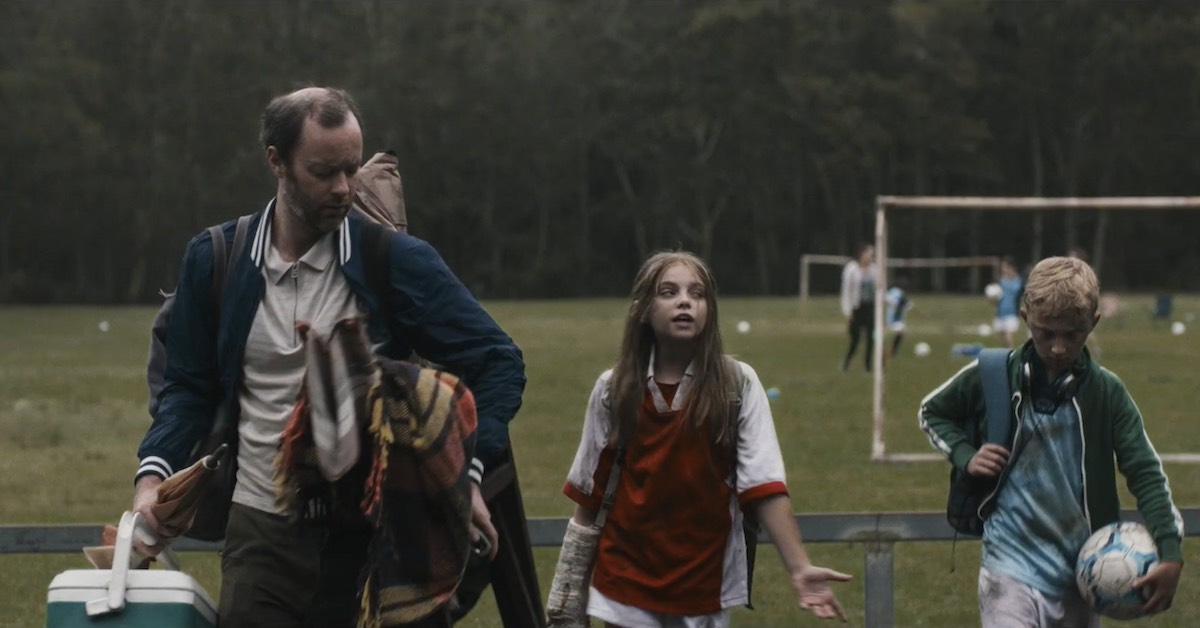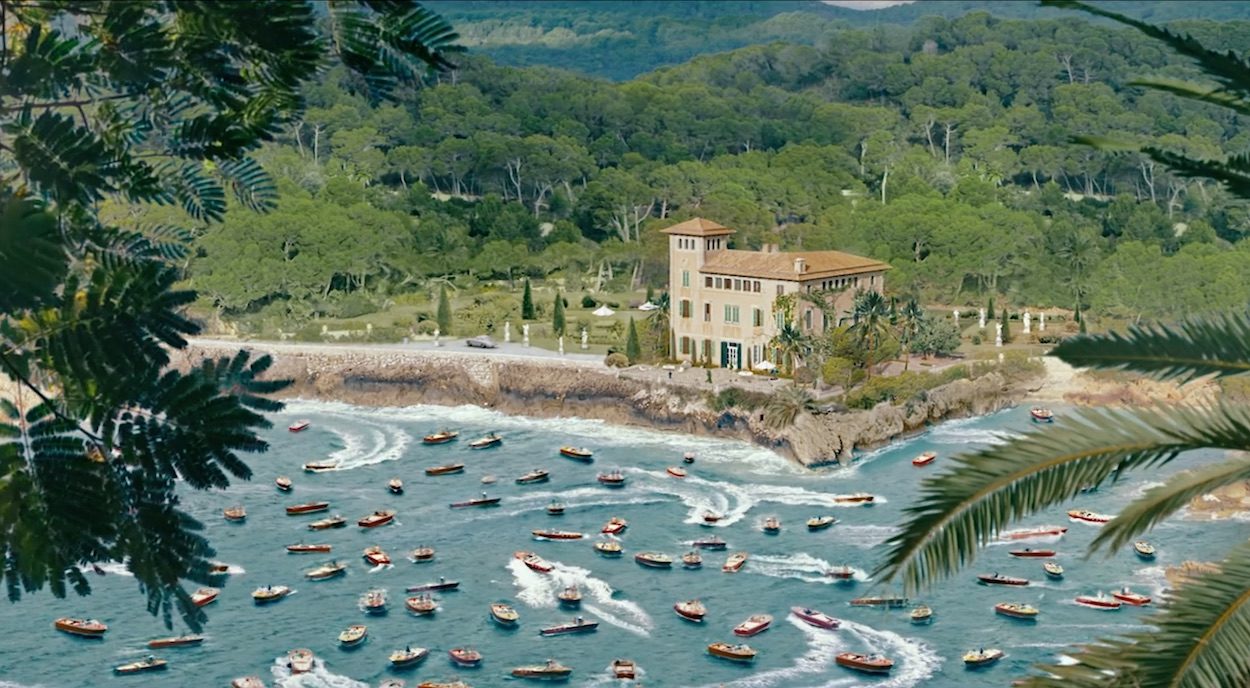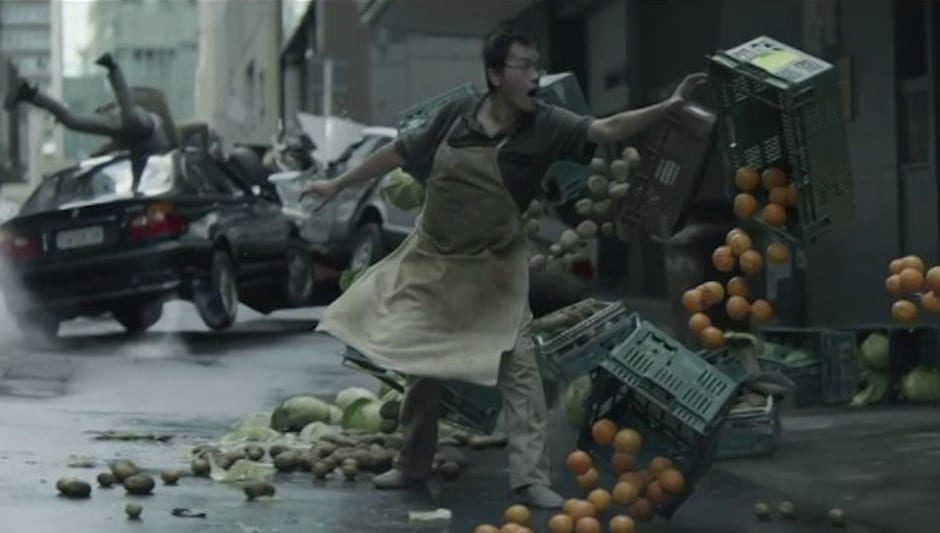Hyundai, Two robots go for a ride
You grew up in Perth, Western Australia, one of the most isolated cities in the world; how did your childhood shape your approach as a director? And what did you grow up watching?
Like most creative people spawning from W.A., I can’t help but feel geography played a big part in my quest, but I think I knew that I didn’t belong there from a young age. I was a creative kid in the 80s-90s, which was seen as an outcast role and coming from a small city meant there were limited means of finding ways to express your creative path.
Therefore, my sense of ‘place’ was something that I always pondered on and got curious about as I got older. It was a working-class background and no one in my immediate family stemmed from any creative fields whatsoever, so directing seemed an alien concept to me. On the flip side, though, I feel that’s where its advantage also lied about Perth… Being so far removed from any other place on the planet made you grow up with a particular thirst and hunger that fostered this desire to work hard and try to reach the unreachable. That’s something I am really grateful for and still feel to this day.
My big escape and inspiration then was the weekly visit to the video store. I used to spend hours there pondering what story and experience I would take home with me. The forensic focus I took choosing a title amongst the distinct smell of carpet and plastic cases cradling VHS or BETA tapes was a place of absolute joy and comfort. It felt like home, and often making that “big” choice was more exciting than the films themselves. However, the movies that really stuck with me were ‘E.T.’, ‘Never Ending Story’, ‘Stand By Me’, ‘The Godfather’, ‘Cinema Paradiso’, and Michael Jackson’s ‘Thriller’ video.
My love of European cinema started early as my father was always watching the T.V. Channel SBS because of his love of European Football, which was always on just before the movies. SBS was one of our only great sources to be exposed to quality films in Australia. I remember my mind exploded when I first saw Jean Pierre Jeunet’s ‘Delicatessan’ and ‘City of Lost Children’ on there. It was a doubleheader that went straight into Stanley Kubrick’s ‘Clockwork Orange’. It was just heaven.
Then this was all combined with an unhealthy obsession for watching Rage, an all-night Australian music video program broadcast on ABC; it was all a young kid in the middle of nowhere needed. I still remember how epic the anticipation of a new video coming out back then was. It was like prepping for the arrival of a significant event. There were so many VHS tapes that took a beating, with countless recordings of Rage every weekend. But it’s a testament to how iconic Rage is that it’s still on today! Now we have it all at our fingertips, all encased in our screens.
Michael Spiccia
You’ve done it all, from working as a designer at one of the world’s leading design agencies to directing multiple award-winning music videos, to being nominated for a Palme d’Or at Cannes for your short film ‘Yardbird’. What excites you about advertising?
I was super fortunate to start my career with an incredible bunch of revolutionary people in the design world from the late 90s; my whole life changed when I moved to Sydney to join Attik. Then not too long after, when I was sent to London, it was there that a real sense of clarity started to emerge with my filmmaking ambitions. Once I committed to the idea of what really spoke to me, I hit the point of no return. I endured a very rocky, unstable, but enjoyable wild ride to where all this is going now…
It’s one I am still figuring out. Still, through making music videos (which was also my personal film school), the world of advertising quickly became a possibility and an exciting draw for me.
The big thing that constantly keeps me excited about advertising is that it shares so many aspects with what I love about filmmaking: the search and quest for capturing an incredible idea. It all comes down to the concept for me. Without an idea, a film sucks, a music video sucks, and a piece of advertising sucks. Great ideas are like unicorns. The real gems are rare, and that’s what ultimately drives me and what I’m always searching for. And when a good one crosses my path, I can’t stop thinking about it until I catch it!
David Lynch often compares it to the analogy of fishing. I’m always perusing or trying to catch that big fish, even subconsciously.
Hyundai, Little Angels
What’re the most significant differences between directing a commercial and directing a film?
There are many disciplines in making commercials that I’ve been fortunate to have learnt, which have transpired to long-form. But ultimately, you’re using different muscles depending on what you’re making.
One’s a short sprint; the other is a marathon. And one of the biggest challenges that I think many people take for granted is the task of telling a story in a minute or two versus ninety or a hundred minutes. It requires a sense of tenacity and endurance that’s very different in commercials. To think economically with time is another positive trait ads have taught me, which force me to be brutal with choices in long-form.
The bureaucratic and collaborative side to advertising operates very differently in film unless you’re dealing with a studio picture. So, it’s refreshing to have complete autonomy when working with film. It’s liberating on the one hand but doubly terrifying on the other when it’s your own material! In saying that, I do enjoy working with some boundaries. I find the limitations force you to come up with ingenious solutions.
One of the other significant differences is that you’re often spoilt in advertising by getting to use a lot of the big toys and lots of room to play. You’re often limited (especially in independent work) in the film world, and you have to be more frugal with equipment. That’s one thing I’ll always be thankful for what advertising has brought to me. It’s provided me with a great canvas to explore, try things out that I’ve filtered through to long-form in so many ways. It’s played a big part in the director I am today, and while sometimes can be challenging, it’s always a hell of a lot of fun.
Is there anything you’d change about advertising?
Late-90’s commercials will always stand the test of time for me. They were so unfiltered and showed how brave so many brands were. So, it’d be great if brands could be as courageous as that again. If we could nuke the research groups and cost controllers and reinstall the faith and trust they put into the creatives they’ve chosen to work with!
Hyundai, Little Angels
‘Tomorrow Wants Its Car Back’ is your second job in succession with the Creative team at Innocean Australia. How important is fostering creative relationships for you?
I was lucky to strike a great connection and bond with a fabulous group of guys at Innocean from day dot. There was an instant sense of alchemy when I started working with the gang. But that’s also an extension of the clients they work with too.
Ultimately, I was just really grateful for the trust they all instilled in me. After the first call when I came back to the agency with my treatment for the ‘Little Angels’ film, I was expecting feedback like, ‘What has this guy been smoking?!’ But what I got was, ‘I wanna have whatever he’s having!’ So we got to party.
We then got to work and had a ball making something we had a shared vision for. They really embraced my approach of wanting to push the boundaries where we could and were really open… That’s where I feel a lot of places tend to get stifled these days. There’s too much fear getting in the way of letting good ideas breathe.
I think if you can make the team you’re working with realise that and get them along for the ride, you’re in for a great experience and hopefully a positive result. For anything really great to get made in advertising, it really does come from the shared union of a group of minds with a collective understanding and vision.
I’m very fortunate as a director that I can be in a position that gets to be in the driver’s seat and take the ride with people I love to jam with.
Your Hyundai spot, ‘Little Angels’, beautifully and humorously imagined two little brats being transformed by the dulcet tones of Enya’s classic ‘Sail Away’. What was it like making a film centred around such an iconic song?
For me, the key to that film was all in the casting and performance.
Casting is something I get incredibly forensic with as it is everything and we had to find two kids that you would believe would kill each other but also be best friends for life. It was a particular chemistry we were looking for that it was a massive challenge but we got it thanks to my outstanding casting director Allison Meadows. She was incredibly diligent and patient with me as I kept the search going until we found these diamonds, Jude and Asha. Instantly, I could see they each shared the kind of DNA I was after that would ultimately translate into the sibling rivalry and bond that unfolded.
We then spent a bit of time rehearsing which allowed the two to become familiar and comfortable with each other but get to a point where they felt they could let their guard down. They were so much fun to work with, and both are ridiculously talented with bright futures ahead of them.
Then once we refined the script and married it with Enya, it felt like an enticing cocktail that I couldn’t wait to try. I wanted to embrace the absurdity of it all but with heart at the same time. Ultimately leaving the audience with a feeling of euphoria. ‘Orinocco Flow‘ was the ultimate chariot that we could ride on to steer us there. It was practically the heavenly anthem of the 90’s so there was a lot to live up to! But I think we did it justice…
I mean, not long after it came out, I woke up to an email in my inbox from Enya and her manager saying that they approved. I was floored, to say the least!
Hyundai, Little Angels
Your latest Hyundai film features robots from the future coming to hijack the all-new Tucson. Even though they move like spiders and shoot lasers out of their eyes, they still feel oddly human… What were your inspirations, and how did you breathe life into these futuristic beasts?
I really wanted to approach these alien creatures with an aesthetic and function that would enable me to imbue as much humanity as possible without being too overtly human-looking.
One of my closest creative collaborators, Peter Savieri, is an incredibly talented artist and one of the best creature designers I know, so we connected on many Skype chats and started trading doodles and sketches of where my head was at. This was one of the most fun stages of the project for me, to be honest; the imagination, the squiggles sharing, getting the crayons out and chiselling our way forward was so much fun.
Once my idea of what they looked like was set, we partnered up with the fantastic folk at Fin, who then took our drawings and started to realise them in a more detailed and with fewer crayons. Headed by their lead character specialist, Tim Streets, I sat with him through many sessions, getting into the minutia of how not only polishing the design (which was a crazy amount of fun) but establishing the reasons and laws of how and why they move and behave as they do. This was a labour-intensive process, but once done then the riggers and animation team got to spread their wings as we brought the beasts to life.
The final stage and one of the most fun for me were creating their language in sound design. So much of the emotion and behaviour is channelled through sound. It’s where so much of the heart lives for me. I mean, I grew up loving so much early Carpenter and Spielberg as a kid, so subconsciously this played a part in how I approached the tone of it all. So much of their sense of wonder always came through the sound. So, that played a massive part.
Most of this film is VFX (apart from a tremendous canine performance) which in the time of COVID is no doubt a blessing… but what were the biggest challenges of working with C.G. characters? And how did you refine their performance?
One of the exciting challenges of working with C.G. characters is that because you essentially don’t have any cast (unless you were motion capturing actors, which we didn’t), much of the performance lives inside you.
Therefore, the shoot was an interesting one as I had to set up and compose these shots with nothing in them. I had a bit of a laugh at watching some of the crew members on the night as I could see them thinking, ‘What the fuck are we shooting here? Nothing is happening!’ So, I would have to act out the actions myself and then get even weirder looks as I’d crawl around like a spider… Fast forward to when we got to VFX, which is where it all came alive. I spent many hours with the animators physically acting out how these guys were to behave.
For me, the real fun of bringing them to a life lived in the nuances and in how we applied our attention to their breathing, the speed at which they moved the heads, the subtle gestures of fingers running across a surface and all those small nuances. Combined with applying the right sounds to them, it gave them a soul in which they really started to come to life for us.
…and if you only knew the truth about that dog!
Hyundai, Little Angels
So, is the saying true that you should never work with animals then?!
Well… we got there in the end, but sometimes, no matter how great the animal may be trained, you just don’t know what version of the animal you’ll be getting on the night.
Let’s just say if a dog was being a diva, and we got Barbara Streisand-ed royally. It just wanted to run things on her own clock. She didn’t care that we were shooting in sub-zero temperatures or heading into overtime. She just wanted things to go the way she wanted it, and somehow, we found a truce. If you could age in dog years, we would have. Need I say more…
Even though both Hyundai spots are full of stunning car photography and funny ideas, there’s still humanity and emotion to their core. What do you look for in a script? And what do you always look to bring to them?
I’m always looking to bring a sense of truth and authenticity to whatever story or idea I am telling. But the thing that I’m constantly seeking in work is an idea that stops me in my tracks and gets me excited.
When I received the script for ‘Tomorrow’s Car’, the thing I was most excited about was the writing of the tagline, ‘Tomorrow Wants Its Car Back’. The ingredients of the script were all in that line and those words fuelled every decision I made. I always came back to it. It was a great piece of writing from the creatives and hence was a joy to bring to life.
On top of the idea, it’s then the heart of something that really drives me. What I’m always looking for is where I can dig humanity out or inject some more in. If I can manage that and craft it in a way that makes it relatable, absurd, entertaining or emotional – that’s what excited me as a filmmaker.
To make an audience ‘feel’ and especially something that will stay with them, it’s like we get to be magicians that use emotions in a chemistry set. Dishing up emotional cocktails is what I really love to do, and it’s why I’m always drawn to and love Magical Realism. The technical side of the craft is constantly teaching me new things. Still, the stuff underneath that drives all those decisions excites me as a filmmaker.
Which part of the filmmaking process do you most enjoy?
My favourite moment is when I approach the stage in an edit where I’ve just reached the apex of a mountain where you can finally see the piece with some absolute clarity and more so that it’s going to work. Then hilariously, on the contrary, my least favourite aspect of filmmaking (and I’m sure I’m not alone on this one) is watching the first assembly in the edit. It’s beyond anxiety-inducing, traumatic and where I’m most vulnerable. It’s where imposter syndrome runs rife, and you think you’ll never be working again. I am constantly telling myself, ‘Wow, this is total shit, you really fucked this one up!” That’s when the critical voice comes to play, but I have to do my best to invite it to have a seat at the table so it can shut up and let me get to work.
But when all the pieces start to align, and you can see the film’s soul in front of you with some clarity, it’s a great feeling. I love the aspect of discovery and the journey you take with an editor to get there. It’s really magical because you can essentially steer the thing in any way you want. I’ve had some transcendent times in an edit suite… There’s a reason why they call it the last re-write.
With a close tie to finding the film in the edit, it would be sound design and score. Coming from a musical background, like working with an editor, sitting next to a composer and finding a melody or sourcing a song for the piece is one of the greatest joys I love about filmmaking.
When I’m writing, I’ll always have music playing in the tone or feeling I’m searching for. I would often be surprised when playing something actually allows me to think of something else entirely left of field that was truly better suited to the material. But working with a composer and finding chord arrangements to shape the story is like discovering the soul or heart of the piece. That’s an extraordinary place for me in the process. And when it lands, and you find it, it’s an incredible feeling where everything about what you’ve made makes even more sense.
You got caught in Australia due to COVID. What’s your experience been like living back in your homeland in such difficult times? And what’s next?
I was really fortunate to be back in Australia just before Covid unleashing itself to the world. I was in Sydney in pre-production for a commercial with the Australian Olympic Team. Fast forward to the first day of shooting, suddenly the pin was pulled on the entire production as the whole globe got shut down for business. I was then making plans to go back home to L.A… Still, I thought a little harder about that decision and decided to go back to Perth and unplug for a few months on Cottesloe Beach.
That was an exceptional time as it allowed me to reconnect with my past in a way that felt kind of cathartic. I was able to see Perth through a new lens and one I got really excited about. You can really tell the whole city is changing, and now it’s home to so many great creative outlets that I would have loved growing up. It’s now this new, vibrant city and home to bands like Tame Impala, so there really is a bit of that buzz in the air and a newfound cultural confidence that’s great too. It’s somewhere that will always be dear to me, and I am very much looking forward to a near future where I can visit more often.
As for what’s next, I’m actually approaching the finishing stages of shooting the last few scenes of a film that I actually shot at the end of 2019 in L.A., just two months before Earth closed. It’s been a frustrating chapter, as I know it’s been for so many people with various film projects. But what made this one more complicated is that my main cast was at that delicate transitioning age and hitting the nucleus of adolescence. So, when the brakes hit on the whole thing, not only did everything cease on the production, but my actors kept growing and growing and… GROWING… AND GROWING! One of them actually shot up another 2 feet in that time. Another decided to develop the timbre and vocal range of a James Earl Jones, and another became a young woman! So, it’s been kind of surreal to still be working on this time capsule of a film and working out solutions to keep the integrity of what was captured nearly three years ago. I’ve been really fortunate, though, to be able to finish it whist out here in Australia and hope to have it completed before the years out.
Interview by Jake Rogers Lowery
Scoundrel website
MJZ website
